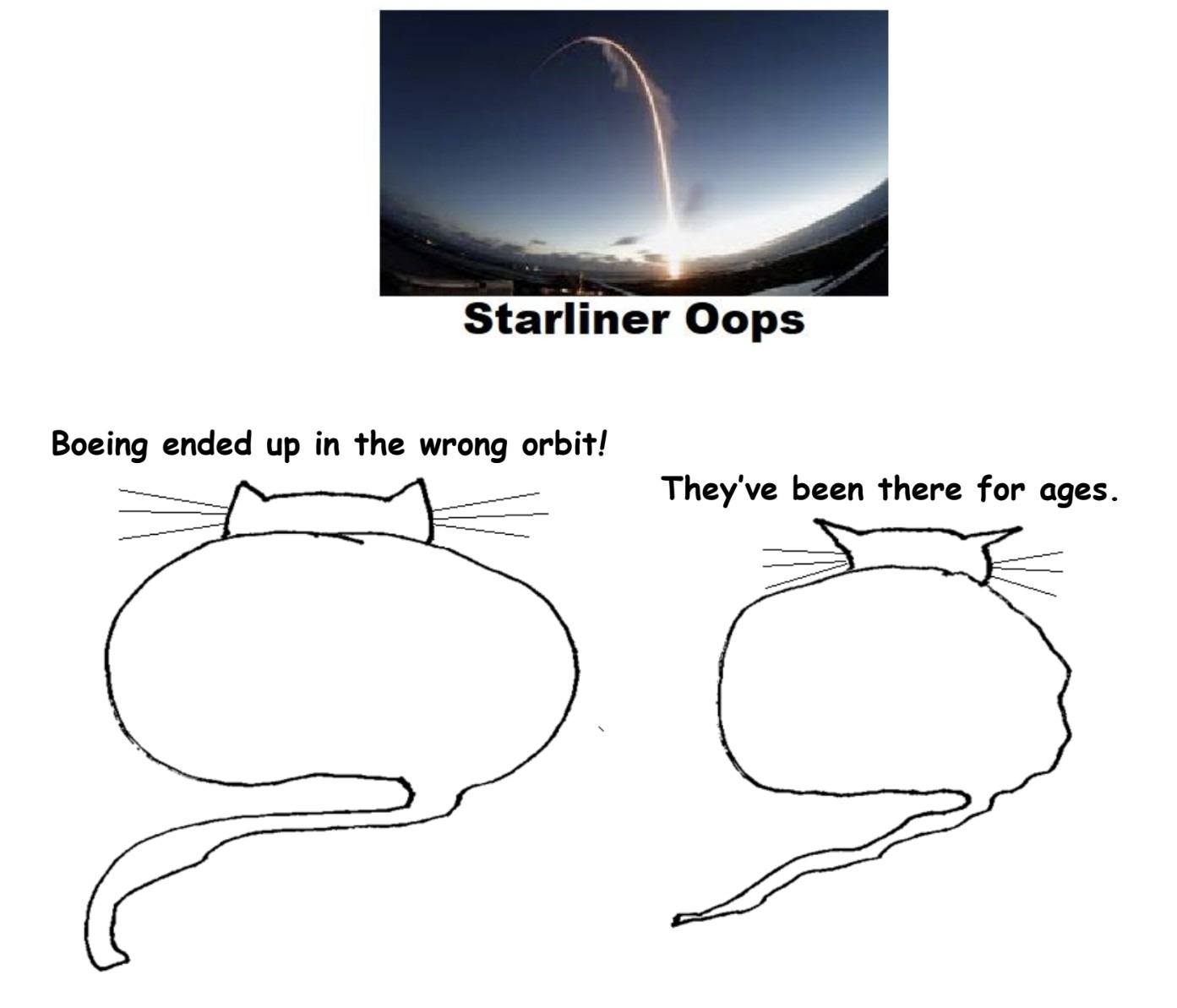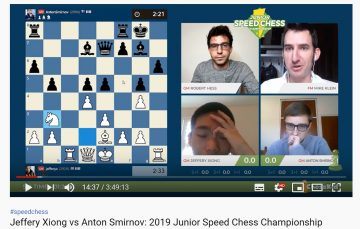A couple of years ago I accompanied my friend (and 3QD colleague) Morgan Meis to Basel, Switzerland, so he could look at this painting called The Fate of the Animals by Franz Marc as part of some research he was doing for a book. I took this photo of him and thought it made a nice visual metaphor for looking back at this past year which will conclude tomorrow. Happy New Year, People!
Equal as the Teeth of a Comb
by Shadab Zeest Hashmi

Ami, my mother, does my hair, “Helen-of-Troy-style,” a high pony tail with strands wrapped around it on days there is extra time before school. She remembers the hairdo from an old movie which she talks about often, along with her other favorite The Taming of the Shrew with Liz Taylor. When she combs, she hums, mostly Urdu songs, occasionally Punjabi. Since settling in Peshawar, she has taught herself Pashto not only because it isn’t easy to run a household and her myriad projects without knowing the local language, but because she has a genuine love for connecting with people of all kinds, everywhere. We joke that she can make friends while crossing the road; this is something she and I don’t have in common. I tend to be withdrawn, like my father, content with my books and thoughts.
There are times when I do enjoy going on outings, especially when Ami takes me on an excursion to the old city and shows me how herbs, spices, henna, tealeaves, and grains of every kind are sold box-less, displayed in smooth mounds. I like to walk through the narrow streets with her, taking in the crisp, salty aroma of street food, the colors of sherbets, glass bangles, sparkly trim for dupattas, watching shopkeepers with their paraphernalia— their weighing scales, aluminum scoops and glossy brown paper bags. The joy of walking through a bazar, which will become a subject I’ll explore for years in my writing, begins here. I feel certain that if I were to put my ear to the ground, I’ll hear the tread of Silk Road caravans. My curiosity about how cultures of encounter are formed and revealed in the marketplace— about trade- and work habits, competition and conflict, creative marketing, the ethos of fair-play and equality and the complex dynamics of cosmopolitanism— is born as a result of watching my mother interact. I’m astonished by how she varies the language or dialect, accent or register, “code-switching” naturally as she goes. Read more »
Stuck, Ch. 8. The Other America: The Domino Kings, “Walk Away if You Want to”
Stuck is a weekly serial appearing at 3QD every Monday through early April. The Prologue is here. The table of contents with links to previous chapters is here.
by Akim Reinhardt
 This song got caught in my head as I circled the country in my 1998 Honda. Leaving New York City, I drove west into the heart of America, up to the Dakotas, out to California, down the Golden State, and then back along the Southern route before angling northward to Baltimore. I saw nearly all the America you can see. But of course there’s not just one America. There are many.
This song got caught in my head as I circled the country in my 1998 Honda. Leaving New York City, I drove west into the heart of America, up to the Dakotas, out to California, down the Golden State, and then back along the Southern route before angling northward to Baltimore. I saw nearly all the America you can see. But of course there’s not just one America. There are many.
The environment shifts dramatically along the way. So too do the people. From densely packed cities to sparsely populated rural areas. From little towns dotting the countryside to sprawling suburbs that fade into forest or desert or grasslands. It is a vast expanse, the world’s third largest nation in both square mileage (behind Russia and Canada) and population (behind China and India). When I was a kid there were 200,000,000 people. Or so a Burger King commercial told us. Now we’re closing in on 350,000,000.
It takes all types. But of course some types get more attention than others. Mass media consistently highlight white people, the major exception being black entertainers (mostly athletes and singers) and criminals. Men continue to dominate positions of power and prestige. The coasts boast most of the population, and sneeringly refer to the middle as “fly over country.” And the cities and suburbs, home to the vast majority of Americans, largely ignore the small towns and rural areas that actually makeup most of the physical landscape.
My own life illustrates many of America’s different faces. Read more »
Monday, December 23, 2019
Day Tripping
by Joan Harvey

It was inevitable. Michael Pollan’s justly lauded book, How to Change Your Mind, was going to lead straight, sensible, old people to doing drugs. “Today I am a middle-aged journalist working in London, the finance editor of The Economist, a wife, mother, and, to all appearances, a person totally devoid of countercultural tendencies,” writes Helen Joyce in the New York Review of Books, after having gone off to Amsterdam to do a good dose of psilocybin.
And of course all kinds of people are tripping these days. The musician Sudan Archives says she was “doing a lot of psychedelics….I swear to God, when I started to experiment with stuff like that, that’s when I became a little more creative.”
Suzy Batiz, who got extremely rich by developing “Poo-Pouri” (a product I’ve somehow never felt the need to buy) mentions that she has done 94 ayahuasca ceremonies to date. From her ayahusasca experiences she has decided she’s a “business shaman.” Yikes! Has it come to this already?
These nice people are having the usual ecstatic experiences that somehow can be expressed only in cliché. “It is possible to feel differently about things,” the journalist writes. “You don’t have to be who you’ve always been. More things are choices than you imagined. Ordinary things are very beautiful if you’ve the eyes to see.”
Don’t get me wrong. I’m all for this. And I doubt I could write about psychedelic experiences in any particularly interesting way. But in my neck of the woods, the mountains above Boulder, inhabited by an odd mix of outsiders, the children of outsiders, and occasional outsider college professors, I’m pretty sure the percentage of those who have done acid and other psychedelics is far higher than the national (or for that matter global) norm. It is not unusual to be at weddings here in which a decent percentage of the people are in various altered states. The most astonishing aspect of Pollan’s book for many of us was that he didn’t trip until he was almost 60. How did he manage, we wonder, to get so far without? Read more »
Perceptions
Stalkerpooh: A Conversation with Simon Lee and Eve Sussman
by Andrea Scrima
 Eve Sussman and Simon Lee are visual artists who use a variety of media, ranging from photography and film to live performance. Some of their work experiments with narrative tropes in video, text, and the act of talking to other people on the phone or in the real world. Their joint projects include CollusionNoCollusion, created during a residency in St. Petersburg, Russia; No food No money No jewels, commissioned by the Experimental Media and Performing Art Center in Troy, New York; the performance/installation Barbershop; and the live channeling performance … and all the reporters laughed and took pictures. Together they co-founded the Wallabout Oyster Theatre, a micro-theatre run out of their studios in Brooklyn. Sussman and Lee also act as producers for Jack & Leigh Ruby, two reformed criminals who are now making art and films based on their previous career as successful con artists. Recently Sussman and Lee have started working with snark.art. Read more »
Eve Sussman and Simon Lee are visual artists who use a variety of media, ranging from photography and film to live performance. Some of their work experiments with narrative tropes in video, text, and the act of talking to other people on the phone or in the real world. Their joint projects include CollusionNoCollusion, created during a residency in St. Petersburg, Russia; No food No money No jewels, commissioned by the Experimental Media and Performing Art Center in Troy, New York; the performance/installation Barbershop; and the live channeling performance … and all the reporters laughed and took pictures. Together they co-founded the Wallabout Oyster Theatre, a micro-theatre run out of their studios in Brooklyn. Sussman and Lee also act as producers for Jack & Leigh Ruby, two reformed criminals who are now making art and films based on their previous career as successful con artists. Recently Sussman and Lee have started working with snark.art. Read more »
The Cancer Questions Project, Part 21: Mustafa Cetiner
Dr. Mustafa Çetiner is well-known for his research in Hematology and has published numerous articles in different national and international journals and three books on Hematological Malignancies. He was the chairman of the Turkish Hematology Society Bone Marrow Deficiency Scientific Subcommittee during 2014-2018. He is a member of many national and international associations, including Turkish Hematology Association, American Society of Hematology, European Bone Marrow Transplantation Registry. He is one of the founders of the Cancer Fighters Association and is currently a board member and vice president. Dr. Çetiner is currently working as Professor of Hematology at Acibadem Maslak Hospital in Turkey, Istanbul.
Azra Raza, author of The First Cell: And the Human Costs of Pursuing Cancer to the Last, oncologist and professor of medicine at Columbia University, and 3QD editor, decided to speak to more than 20 leading cancer investigators and ask each of them the same five questions listed below. She videotaped the interviews and over the next months we will be posting them here one at a time each Monday. Please keep in mind that Azra and the rest of us at 3QD neither endorse nor oppose any of the answers given by the researchers as part of this project. Their views are their own. One can browse all previous interviews here.
1. We were treating acute myeloid leukemia (AML) with 7+3 (7 days of the drug cytosine arabinoside and 3 days of daunomycin) in 1977. We are still doing the same in 2019. What is the best way forward to change it by 2028?
2. There are 3.5 million papers on cancer, 135,000 in 2017 alone. There is a staggering disconnect between great scientific insights and translation to improved therapy. What are we doing wrong?
3. The fact that children respond to the same treatment better than adults seems to suggest that the cancer biology is different and also that the host is different. Since most cancers increase with age, even having good therapy may not matter as the host is decrepit. Solution?
4. You have great knowledge and experience in the field. If you were given limitless resources to plan a cure for cancer, what will you do?
5. Offering patients with advanced stage non-curable cancer, palliative but toxic treatments is a service or disservice in the current therapeutic landscape?
Dystopians In High Castles
by Thomas O’Dwyer

It could have been that simple — the Nazis nuke Washington D.C. and it’s all over. Capitulation follows, resistance is futile. There are plenty of right-wingers in high places — political, military, even cultural, who see this not as a conquest but an opportunity. French Marshal Philippe Pétain and Norway’s Vidkun Quisling had been such people. So too is Obergruppenführer John Smith, their fictional American counterpart in Philip K. Dick’s classic novel The Man in the High Castle. The conquering Nazis offer formerly patriotic American officers light temptations and they casually fall, and then rise. The war is lost, collaboration is inevitable. It’s better to be at the front of the queue, showing some willingness to proclaim (by some small actions) that you accept the times as they are a-changing.
Dick’s novel differs in many aspects from the recently completed Amazon TV series based on it. But in both, the Nazis secure the east side of the country, setting up their capital in New York. The West Coast is messier, but wasn’t it always? On that side of the continent, the Japanese have won. Unlike the stiff-necked and murderously pure Nazis, the Japanese are unabashedly nationalist. They are ruthless occupiers too, but ration their resources to inflict their cruelties on identifiable enemies and resisters. Read more »
Conversation with a Genie
by Charlie Huenemann
 GENIE: AT LAST! Esteemed Master, you have released me from the ancient lamp! Out of my boundless gratitude, I shall grant you three wishes!
GENIE: AT LAST! Esteemed Master, you have released me from the ancient lamp! Out of my boundless gratitude, I shall grant you three wishes!
TRAVELER: No thanks, I’m good.
GENIE: Wait, what?
TRAVELER: I’m good. No granting of wishes needed. Have a nice day.
GENIE: But, Master, you must understand that you can wish for anything it is in my power to grant – and let me tell you, that power is enormous!
TRAVELER: I’m sure it is. But I’ve heard all the stories about you genies and the way you grant wishes, and I’d like no part of it.
GENIE: What do you mean, Honored Master?
TRAVELER: Well, you genies are tricky. I might wish to play the piano, but you’ll grant it and then stick me out on a desert island, or you’ll make me deaf so I can’t hear my own playing. Or I’ll wish for a pile of money, but then I’ll go to jail for tax fraud, or the money will be in some outdated currency. Or I’ll ask for a great army to command, and you’ll give me an army of frogs. So no thanks, I’ll have no part of it. Too risky!
GENIE: Well … true, that sort of thing has happened from time to time. But only when there is a lesson to be learned. And let me say that sometimes it is the wisher’s own fault for not being more specific! Like the man who wished to be a great opera singer – how was I supposed to know he didn’t want to be a soprano? Read more »
Catspeak
by Brooks Riley

Reading Myself
by Mary Hrovat
 The indicators that people use to track and understand their moods include exercise, diet, sleep, and many others. I’ve been thinking recently that my library activity surely must be correlated with my mood. I’m a frequent user of two libraries, and my checkouts and returns have a fairly small and regular ebb and flow. Overlying these minor fluctuations are larger and more diffuse patterns that I think offer clues to my inner state.
The indicators that people use to track and understand their moods include exercise, diet, sleep, and many others. I’ve been thinking recently that my library activity surely must be correlated with my mood. I’m a frequent user of two libraries, and my checkouts and returns have a fairly small and regular ebb and flow. Overlying these minor fluctuations are larger and more diffuse patterns that I think offer clues to my inner state.
Reading the clues can be complicated. If there’s a connection between mood and library activity or reading, it’s not clear-cut. But that’s true of various other markers that people track. For example, sometimes I get a lot of exercise because I’m filled with energy and relish the physical pleasure of walking and observing. At other times, a high step count reflects the fact that I’m restless and anxious; part of me is hoping that if I walk far enough, I can out-walk my problems or maybe even myself. Sometimes I push myself to get out a lot even if I feel exhausted and sick at heart, because I hope the exercise will lighten my mood or help me sleep. And sometimes, of course, I walk a lot because there are many errands to run, and I don’t drive.
The depression questionnaire they use at my doctor’s office asks about seemingly contradictory things; one question asks whether you’ve either lost your appetite or been overeating, for example, and another asks if you’re sleeping more or less. I don’t know if that means that depression can either enhance or suppress appetite, or whether people respond to depression by shunning food or seeking comfort from it, or (most likely) a little of both. It can be very hard to tell symptoms from attempts to treat symptoms. Read more »
The Candidate: Running for office in small town America
by Carol A Westbrook

“You must be crazy,” the current Council president said to me. “Why do you want to run for Town Council?”
Being on the Beverly Shores Town Council was a thankless job. It paid only a small stipend, took up a lot of time in month meetings, committee meetings, and pubic events. There were always calls from irate residents–a tree is down, their trash was not picked up, why did they get a parking ticket, their road needs plowing. Many former councilors told me they started the post with many friends, and ended it with just as many enemies.
Why did I want to run? Was it election fever, inspired by twelve Democratic presidential candidates trying to grab the nomination? Did I have an urgent political agenda? Did I have to prove myself somehow? No, to all of these. The real reason I ran for office was because somebody had to do it.
As of March 2019–the deadline to file for a local primary election in the State of Indiana– there were only four candidates who declared for our Town’s five council seats, and one for Clerk-Treasurer. And they were all Democrats. There were also no independent or Republican candidates at that time, either. No need for a primary, but not enough candidates for five seats. Somehow that didn’t seem right. There should be at least five candidates, and they shouldn’t all be from the same party. The electorate deserve a choice. Somebody had to run. Read more »
Monday Video: Happy Holidays!
Trailblazer: From the Mountains of Kashmir to the Summit of Global Business and Beyond
by Rafiq Kathwari
 A Jewish grandfather and a Muslim man walk into a New York delicatessen….and 55 years later the Muslim man writes a trailblazing autobiography.
A Jewish grandfather and a Muslim man walk into a New York delicatessen….and 55 years later the Muslim man writes a trailblazing autobiography.
He’s scrawny when he leaves his native home in the Vale of Kashmir, a disputed land in the Himalayan foothills between India and Pakistan. He dodges an impending war. He has no formal passport, just an official residency permit which expired many years ago.
Yet, he takes a chance and, amazingly, boards the last flight from Delhi to Lahore before war breaks out.…it’s an electrifying moment among many, some heartbreaking, some joyful, others human, all too human.
Those moments lead one to believe that the young man was destined for the future of his adopted home, America, where his grit and pluck, his trysts with good luck, his innate belief in common sense all combined to feed his fire within before the fire could feed on him.
Read, how many years ago the Jewish grandfather saw the hunger in the eyes of the Muslim man and sent him on a Mission Impossible to Washington D.C.
Muslim man made the impossible possible, earning the trust of his Jewish mentor who, soon after, handed over the captaincy of his quintessentially Yankee company— Ethan Allen (named after a hero of the American Revolution) — that he had founded during the Great Depression to the young Muslim man named Farooq — which in Islamic tradition means “The Redeemer” or “the one who distinguishes between right and wrong.”
Read how Farooq brought his only previous role as captain (of his college cricket team in his native Kashmir) to bear upon his new captaincy of Ethan Allen in Danbury, Connecticut, its headquarters. Read more »
Stuck, Ch. 7. Bartender Bookmarks: Thin Lizzy, “Rosalie”
Stuck is a weekly serial appearing at 3QD every Monday through early April. The Prologue is here. The table of contents with links to previous chapters is here.
by Akim Reinhardt

During high school, my friends and I used to drink at a local Irish bar. And when I say Irish bar, I don’t mean some contrived yuppie shit hole with an Irish name, a bunch of Gaelic tchochkes splattered across the wall, and overpriced pints of Guiness poured poorly. I mean a working class bar in the Kingsbridge section of The Bronx where Irish immigrants drank, mostly bottles of Bud emptied into small, stemmed glassware. Whatever’s cheap.
The place was called Harper’s. The clientele was mostly old men, with a cacophony of younger people occasionally crowding in on the weekends. Me and my friends started drinking there when we were 16. The legal age in New York was still 18, and neighborhood bars usually didn’t care so long as you were within a couple of years. I didn’t bother buying a fake ID until I went away to college in Michigan. At corner bars in The Bronx, no one even bothered to ask.
Harper’s was the kind of quiet hole in the wall where nothing was happening, but anything could happen and it wouldn’t surprise you. Like out of the blue one night, some guy setup a guitar and small PA, and started singing sad sap Irish folk songs like “I Wish I Was Back Home in Derry.” Harper’s never had live music, but suddenly there he was.
No one paid attention. He never came back.
At some point you were also sure to have someone come into the bar and try to sell you something. Maybe a woman hawking black market movies on VHS, or a huckster pretending to be deaf and mute, collecting money for a fake charity, or some guy peddling roses that you could give to your lady.
None of us ever had a lady. All we ever bought was booze. Read more »
Monday, December 16, 2019
The Disconsolation of Philosophy
by Joseph Shieber

This semester I’ve been teaching a first year seminar entitled “Propaganda”. It is, unfortunately, a very timely topic.
The course draws first year students from across the spectrum of majors — some up-and-coming humanities majors, but also economists, natural scientists and engineers. Because of that mix, and because of the fact that I can’t really expect that many of the students have been exposed to philosophical thinking in their pre-college careers, I try to use the course as an opportunity to introduce the students to a little bit of how philosophy is done.
Having taught the course over a few iterations now, I’ve had an opportunity to observe a few different reactions on the part of my students to the bit of philosophy that we engage in in the course. There’s some dismissiveness, of course, on the part of some of the students, but I’ve also noted surprise on the part of some of the students in response to my own stance about how modest the fruits of philosophy often are.
I think that many of the students expect me to claim more for philosophy and what it can achieve. Perhaps they expect me to declaim dramatically that there is no such thing as truth. Instead, I’m more than happy to assert a variety of truths: that human-caused global warming is a genuine phenomenon, for example, or that vaccines don’t cause autism, or that human beings are the result of evolution by natural selection. But I also take pains to try to expose the assumptions on which those assertions of mine rely. And I also try to trace how different assumptions — including about what counts as good evidence — might lead someone to have different beliefs.
What I hope to achieve with the way that I deploy philosophy in the course is to get students to appreciate the value of intellectual humility. I want them to recognize how rigorous and exacting intellectual humility can be. It involves excavating the hidden premises that underlie our beliefs. It is also compatible with maintaining our belief in the truth of those premises, while at the same time acknowledging that those who accept different, incompatible premises, will arrive at different beliefs. Read more »
Her Father, and Eurydice
by Abigail Akavia

at The Metropolitan Museum of Art
When you opened the door to the apartment where I grew up, you could see all the way to the end of the living room and the large window that spanned its width, an entryway-less structure typical of apartment buildings in Tel Aviv. Our living room was particularly long, though, so that my father’s desk, which sat close to the window but facing the middle of the room, felt far enough away to be considered its own space, set apart from the bustle of a three-kids household that was also my mother’s in-home clinic. Add to the physical distance my father’s ability to immerse himself in whatever he was reading, ignoring anything that was not a direct address to him (one of those universal dad superpowers, my mothering self now knows), and he was almost completely cordoned off from the rest of us when he was sitting at his desk, as if behind a door ajar.
Even when his reading lamp was the only light on in the big room, it was possible to consider his almost immobile figure as not quite there. When my first boyfriend stepped into the apartment for the first time, however, he most definitely recognized my father’s dimly-lit, looming professor-like presence at the edge of the room. He was what you would call “a good kid”—I, in hindsight, have taken to defining him, even at 19, as a mensch—and he took the prospective meeting with my dad seriously. My father, for his part, preferred to act as if nothing out of the ordinary was happening. He put down his glasses, looked up to say a short hello, and then resumed his reading, a combination of simply holding on to his business-as-usual seat at his desk, deliberately extending the gift of privacy to his late-bloomer daughter, and a possibly unconscious urge to avoid the awkwardness of the encounter.
Maybe he also knew, in a parental sixth-sense which I used to think only my mother had but of which I can now also imagine a paternal version, that this very nice guy wasn’t the love of my life—that he was not going to sweep me away, there was really nothing to worry about. So there was no menacing handshake, no steely look into the young man’s eyes to force him to own up to his mythically filthy intentions and metaphorical abduction of my father’s youngest, no once-over to assess his prospective ability to provide for me. In short, no forced and embarrassing macho face-off. Read more »
Perceptions

Martin Roth. “from may to june 2012 i grew grass on rugs in a castle”.
” …This state of in-between is central to his Persian rugs on which grass grows “on the ‘dust of history’.” They were inspired by philosopher Michel Foucault’s examination of “heterotopias,” spaces that both exist and do not exist. Since the designs of carpets were first patterned after gardens, Foucault wrote that “the garden is a rug onto which the whole world comes to enact its symbolic perfection, and the rug is a sort of garden that can move across space.”
Boris Johnson and the worst of times
by Emrys Westacott
“It was the best of times; it was the worst of times.”
 I suspect there are many who feel that this Dickensian paradox applies to their own life and times. I certainly do. If you’re fortunate enough to have a sufficient income, a comfortable home, loving family and friends, decent physical and mental health, and plenty of interests to pursue, then life is good. But then a lying, narcissistic, cynical, conman like Boris Johnson is ensconced in power in the UK for five years, and things are not good. One dwells in the Slough of Despond.
I suspect there are many who feel that this Dickensian paradox applies to their own life and times. I certainly do. If you’re fortunate enough to have a sufficient income, a comfortable home, loving family and friends, decent physical and mental health, and plenty of interests to pursue, then life is good. But then a lying, narcissistic, cynical, conman like Boris Johnson is ensconced in power in the UK for five years, and things are not good. One dwells in the Slough of Despond.
This odd disconnect between the relative pleasantness of one’s own circumstances and an appalled sense that, on so many counts (poverty, inequality, political corruption, news media, environmental damage…..), the world is heading in the wrong direction, has become a familiar, ever-present condition for many of us.
Interestingly, the disconnect seems to be not only experienced by people on the left. The median household income of Trump supporters during the 2016 Republican primaries was $72,000 (compared to a national median household income figure of $56,000). Historically and geographically speaking, $72K is a decent chunk of change which for most people should make possible a fairly comfortable lifestyle. And in fact, a 2017 PRRI study concluded that Trump supporters were not so much motivated by dissatisfaction with their own economic circumstances as by fears about cultural displacement (of whites by minorities and immigrants).[1] For most of them, too, their fear, anger, and dissatisfaction concerned the state of the nation rather than their personal circumstances. Read more »
The tyranny of distance: the life of a young Australian chess player
by Cathy Chua
 Earlier this year one of the encounters technology has made available for mind games took place – the 2019 Junior Speed Chess Championship. The technology is impressive, with the board, and video commentary by two masters, along with video of the players.
Earlier this year one of the encounters technology has made available for mind games took place – the 2019 Junior Speed Chess Championship. The technology is impressive, with the board, and video commentary by two masters, along with video of the players.
Smirnov, the Australian number one player was outranked by his US counterpart and lost, despite picking up a handy win in the first game. I wondered if it was the usual story of Australia suffering from its location in the world. For Smirnov it was an early morning start, something which chess players normally do anything to avoid. The timing was definitely against him.
If you are Australian, then the expression ‘the tyranny of distance’ has a meaning that has never gone away. The Internet and other technological advances have made the world smaller, but the gains for Australia have always been offset by the fixed disadvantages, which for the foreseeable future will not change.
Perhaps there is a future in which mind sports like chess are strictly fought over virtual boards. But for now the ones that count involve travelling to a point where competitors congregate and push wood, as the expression has it. Casting my memory back to days when I made these trips in the 1970s and 1980s, improvements are apparent for Australians. Read more »


